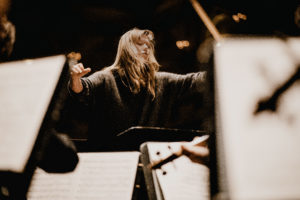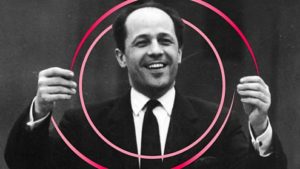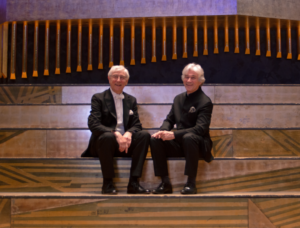
I’m not exactly predisposed to be a follower of Gustav Mahler. As a Copland fan I tend to listen to (in the main) short, concise, often leanly orchestrated pieces. Much of Copland’s output couldn’t be more opposite than Mahler’s gargantuan symphonies. Yet like Copland (who was a fan with reservations) there is something that draws me into this vast musical world.
Most people that I spoke to about coming to see Mahler 9 in New York though, raised their eyebrows. The general consensus seemed to be that by subjecting myself to the 90 minute long symphony, I was in for an ordeal or at the very least an endurance test.
But who could resist the NY Philharmonic being conducted by their recently inducted music artistic director designate Gustavo Dudamel? Furthermore, to witness a work that made Leonard Bernstein weep and in the very place (David Geffen Hall then called Philharmonic Hall) that opened 61 years ago with a Copland work (Connotations) that infamously got the lukest of luke warm receptions from the audience and first lady Jacqueline Kennedy?
I have seen some great conductors in my time but none at the very zenith of a stratospheric career rise. Dudamel is the Bernstein of his era, someone with absolute star status who crosses over into the mainstream.
I have never seen a standing ovation before a classical music performance until this performance. The closest I have got to this level of anticipation and expectation was seeing Andy Murray at the O2 in London just after he was crowned world tennis number 1. It was just like that but Dudamel inspires even more fervour – he is essentially the Roger Federer of music.
Of course, everyone knows that Mahler’s final complete symphony, written a year before his death is all about mortality. Sorrowful, bittersweet melodies and an often funereal pace of the opening, the insolent rage in the third movement and final acceptance in the fourth movement. Throughout a heavy melancholy pervades which is usually thought to be associated with the death of his daughter Maria Anna who died, aged 4 a few years earlier.
There are lots of bits that I like about Mahler 9, especially the beautiful opening, but overall, I feel that getting through the first movement is a bit like doing the 2.4 mile swim and 112 mile bike ride of an Iron Man! It frequently occurs to me (and I know this is sacrilegious to admirers) that, with some of Mahler’s output (a bit like Wagner’s and Shostakovich’s) I would prefer listening to the edited highlights! Nevertheless, once you’ve completed the 30 minute opening, you’ve really broken the back of the work
The second and third movements, by contrast offer great relief to the morbid nature of the first the second half hour moves forward at pace. There is some suggestion (see this blog and the book reviewed) that Copland’s burlesque movement from Music for the Theatre was influenced by Mahler’s use here. I don’t really see it myself. I think there is a closer association with Dance Symphony – listen for the grotesque flourish two thirds of the way through. It sounds not dissimilar to the finale of Dance of Mockery to me.
Unfortunately, where I was sitting (tier 1 back left) there were distractions. Unfortunately, a man feinted during the opening movement and there was a bit of a commotion to bring him around. Thankfully, he seemed OK and he was able to walk out with his wife.
At the start of the second movement there was a dim but distinctly audible alarm going off somewhere. It sounded like a distant ambulance on Sixth Avenue and continued throughout the second and third movements. There were several accusatory looks amongst members of the audience – one guy was pointing the finger at someone with a hearing aid and others were checking their phones just in case it was them. One guy left the auditorium several times to alert staff of the background noise. Another left his seat and moved to the other side of the hall. Eventually, some staff entered to try and identify what was going on.
It was a shame. Probably most of the audience were unaffected and it seemed that Dudamel and the NY Phil were blissfully unaware. But for the people in my area, the performance was disrupted. Thank goodness though that this happened during the central two faster, louder movements.
Not a moment too soon, the alarm was finally located and turned off by staff just before the final adagio. Had the alarm continued beyond it would have completely ruined the experience. I was lucky though that earlier that day I had listened to a Radio 3 meditation podcast. It said, that during the breathing exercises it was inevitable that your mind would wander, but not to worry, just to concentrate on the moment and the breathing. As the final movement in particular, is very much like a mindfulness exercise, every time my concentration lapsed I managed to take this advice on board and lock back in to the music.
The final movement, along with the Tchaikovsky’s Pathetique Symphony No 6 is almost definitely one of the most moving in the whole classical music canon. It is one that simply doesn’t translate to a CD or a streamed recording. Dudamel squeezed every last molecule of emotion out of the extremely long drawn out finale. Of course, perfection is not achievable. Even someone as gifted as Dudamel, who had the audience in the palm of his hand, cannot be in control of every last person. As the music ebbed away there were several stifled coughs and right at the denouement an unfortunate sneeze – nothing like a good bit of audience participation!
Following the final note, Dudamel held off the applause for at least 30 seconds, perhaps longer before permitting the audience to erupt. There was a virtual unanimous standing ovation that lasted 10 minutes. It was a testament to Dudamel’s solidarity with the orchestra that he stood with them rather than being aloof on the podium. As he took turns in singling out the different orchestral players the biggest cheers were reserved for the horns and trumpet, who were immense throughout.
Despite the intrusions it was quite something. In a way, the stuff that was happening around the auditorium made it more real and even reflected the nuance of the music being performed. As they say, Mahler symphonies do embody the full human experience and in this performance all the outside agencies did justice to that!
I walked back to my hotel in midtown and witnessed several crowds of people watching breakdancing groups in Times Square. Today, I’ll be back at Lincoln Centre for the newly choreographed Copland ballets by Justin Peck. Mahler 9, street dancing and Copland ballets – all in 24 hours in the city that doesn’t sleep!









Leave a Comment